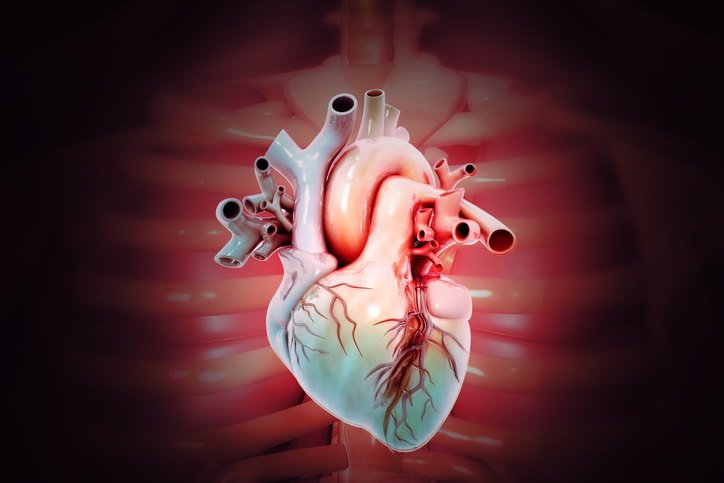Dr. Natalie Tapaskar of CardioNerds Speaks to Dr. Akinobu Itoh About a State-of-the-Art Heart Pump
By Rob Dillard - Last Updated: March 31, 2023CardioNerds correspondent Natalie Tapaskar, MD, cardiology fellow at Stanford University Medical Center spoke with Akinobu Itoh, MD, PhD, Surgical Director of Heart Transplantation and Mechanical and Circulatory Support, Brigham and Women’s Hospital in Boston. The discussion centered on a study that Dr. Itoh presented at ISHLT 2022 about the Impella 5.5® with SmartAssist®, a state-of-the-art heart pump that unloads the left ventricle, decreases ventricular work, and provides optimal circulatory support.
Dr. Natalie Tapaskar: Hello everyone, my name is Dr. Natalie Tapaskar, and I’m a second year general cardiology fellow at Stanford University. I’m really excited to be here today with Dr. Itoh. Dr. Itoh is the surgical director of heart transplantation and mechanical circulatory support at Brigham and Women’s Hospital in Boston. We’re going to be speaking today with Dr. Itoh about his experience with the Impella 5.5® with SmartAssist® system. Thank you so much for being with us here today Dr. Itoh.
Dr. Itoh: Thank you Natalie for having me here today.
Dr. Tapaskar: Alright, so we’re going to get started with just some basic info about Impella 5.5. So, we know that it’s a temporary left ventricular support device that was approved by the FDA in 2019. We know that it’s intended for use up to 14 days and indicated for a treatment of ongoing cardiogenic shock post-MI or cardiac surgery, or for acute decompensated heart failure associated with shock. So the Impella 5.5 is meant to unload the LV, reduce ventricular work and provide up to 6 liters per minute of circulatory flow. Dr. Itoh, could you start off by just explaining to us the basic procedural details on how the Impella 5.5 is placed and any key differences in its structure, function compared to the Impella 5.0?
Dr. Itoh: Absolutely. So, surgery usually start with the general anesthesia and the tracheal intubation, and we approach through the… Either left or right axillary artery, mainly right axillary artery because it’s more proximity to the ascending aorta. Then, expose the axillary artery, sew a graft on, which is usually 10 millimeter Dacron graft, and then the end of the Dacron graft we place the Peel-Away sheath, followed by wire, and the fluoroscopy wire goes through the aortic valve. Then, through the wire, we place the Impella 5.5. Then, surgically it’s very straightforward, as long as you have vascular surgery training, it can be done. Then, 8 millimeter graft is also possible to use. It’s a little bit tricky, but it’s definitely possible for especially smaller axillary artery down to 6 millimeter so, we can saw off 8 millimeter graft and then place the device in.
Dr. Itoh: When it comes to the comparison, compared to 5.0, 5.0 used to have the pigtail catheter at the tip of the device, which actually was a little bit… Made us life a little more difficult when we wanted to turn the device to position nicely. Now, 5.5 we don’t really have any pigtail now. So, it’s more flexible from the positioning standpoint and also the device is much… A little bit shorter and the more flexible, the motor part, the rigid part, is 40% shorter, I believe. So it’s… Even if you have tortuous brachiocephalic artery, axillary artery to the ascending aorta, it’s more user-friendly, surgeon-friendly to place this thing into the heart.
Dr. Tapaskar: Thank you so much for that explanation. So, my next question is regarding the risk of bleeding and clotting with Impella 5.5. So, in your experience, does the Impella 5.5 confer a higher risk of hemolysis than other percutaneous LV support devices? And what is your general practice and recommendations for anticoagulation with Impella 5.5?
Dr. Itoh: So, anticoagulation is still quite a debatable field when it comes to Impella management. So Impella 5.5 has got a purge solution going through the motor and the system, irrigating. The amount of heparin we use is pretty small dose because the purge solution goes like 2 to 6 milliliter per hour, which is much, much less compared to 5.0 means that the heparin goes into the system is much smaller dose. However, the graft… I mean, the cable goes through the brachiocephalic artery, which is obviously the main source for the brain, and you don’t want to have any thrombus or anything along the cable. Therefore, a lot of management, we try to utilize the systemic heparin, except the situation that post-cardiotomy situation or we had a major surgical intervention, but a regular cardiogenic shock situation, not really the post-surgical situation, we tend to utilize the systemic heparin with a PTT goal between 60 to 90.
That being said, those patients stay on heparin for a long time, can cause heparin-induced thrombocytopenia, or bleeding from the stomach, intestine or retroperitoneal bleeding, the type of bleeding event can happen but it’s… I don’t think it’s any higher than any other mechanical circuitry support device, hoping to be lower because the heparin dose, we can go really low.
Then when it comes to hemolysis, the… Compared to major, larger, cannula bore, cannula ECMO support, Impella device spins a lot, 36,000 RPM with the 5.5, but compared to CP or 2.5, it’s much, much less spinning. So, the 5.5 doesn’t really cause any clinical hemolysis, although LDH goes up to 500 but, that’s not really causing any tea-colored urine or anything, which is not that different from Durable LVAD type of thing. So, from that perspective, 5.5 is pretty durable… A very durable device when it comes to hemolysis.
Dr. Tapaskar: That’s awesome, thank you so much. So, my next question is about patient ambulation with the 5.5. So, we know early ambulation is very important in ICU patients. What is your experience and recommendations for practitioners to make sure the device doesn’t move when patients are ambulating?
Dr. Itoh: Yeah, so company recommendation, all the clinical specialists are pretty good with the… How the device should be fixed onto the chest wall. I personally tunnel the graft out laterally and then place a device on the chest and little bit of upper abdomen and usually put sutures in when patients are still sleeping so that these things never move or never turn. So, then by doing that, I think patients are free to go for a walk in the ICU, all those things. So, it’s more… Patients are fine, device is fine, it’s more provider side issues. “Oh we’ve never walked these patients on Impella”, then those things can happen. So, more educational part for our staff is going to be a more challenging part for majority of the practice, I believe.
Dr. Tapaskar: That’s very important, thank you for letting us know. So, my next question is about hemodynamic management with patients on Impella 5.5. So, the Impella controller screen has a lot of good information, MAP, cardiac output, LVEDP. Do you find that having an additional PA catheter is helpful for managing these patients?
Dr. Itoh: That’s a very good point. With the SmartAssist, all the pressure monitoring system with the 5.5, it’s pretty well advanced compared to LD or 5.0 we had. So, from that perspective, it’s much more user-friendly. Then, for those things we don’t really need a Swan-Ganz catheter when Impella is there once we get used to manage those patients. However, Impella is not going to stay forever. We’re going to recover those patients and get the Impella out. For that weaning purpose and the post-Impella management, we need some sort of non-invasive hemodynamical measurement device, unless you place the Swan-Ganz. So, when we take the Impella out, that’s the time we need something, because we want to be very careful about the Impella weaning process for the patient management, but when you have Impella, majority of the time, you don’t really need any other measurement tools.
Dr. Tapaskar: That’s awesome, thank you. Alight, my next question is about LV venting with Impella 5.5. So, there was a recent large study that looked at 3000 patients from the ELSO registry, looking at Impella or percutaneous VADs versus balloon pumps in terms of LV venting on patients with VA-ECMO and found really no difference in mortality between the two. So, what is your experience and recommendations for using Impella 5.5 as a venting strategy?
Dr. Itoh: That is also my main research, a part of the main research interest. Then I’ve been looking into our own patient data back in St. Louis, I just moved to Boston recently. So, in my experience, in my perspectives, Impella helps the LV venting, then unloading LV should bring a lot of benefits for… Especially for patients who we are looking at LV recovery and also pulmonary edema congestion standpoint, it’s very beneficial. That being said, it depends I should say. If the patient’s LV function is well maintained on ECMO, I tend not to put anything in, because those hearts will get better. Even the EDP, VDP is a little bit higher, as long as the patient get ejection with the ECMO management, it’s fine. So, also, placing the Impella, especially those circumstances, surgeons or many institutions tend to request the Impella CP insertion from the femoral artery and that can be done in the catheter percutaneously very easily by cardiologists, but that can potentially bring some leg ischemic condition or along the cable patients can develop some thrombosis issues.
So, it’s not free. Everything comes with some potential issues and complications therefore, I think theoretically and the majority of the time it works out really well. So, for that perspective, when I go on ECMO on patients and when we need a LV vent, I usually place Impella 5.5 by myself so that we can wean ECMO and then to take from heart we can stay on Impella, then slowly wean the Impella or take it out, or move on to Durable LVAD. So, that’s a new trend many of my colleagues and friends like to do, and which work works out really well for patients. So, that’s kind of LV venting, but it’s a set up to further steps for future treatment.
Dr. Tapaskar: That’s wonderful, thank you. My next question is probably the most important one and it’s about patient selection for Impella 5.5. You are touched on it a little bit, but now that we have so many devices to choose from, what does the ideal patient for Impella 5.5 look like? And just more broadly, what role in cardiogenic shock do you see the Impella 5.5 filling as we move forward?
Dr. Itoh: Hmm, so I would like to make these comments as a physician to place patients in the middle, center… Patient-centered comments. So, I would not say what I… What are those ideal patients for Impella, no I have to say, what are the patient population who get the most benefit out of having Impella, I would mean Impella management. So, from that perspective, I believe.. Well, there are two or three different patient populations we tend to look into. One is acute cardiogenic shock patients who get Impella CP or placed on ECMO. Then, as I said, we place those patients on 5.5, then come off everything and stay on Impella 5.5, look at the recovery or Durable device or potentially heart transplant.
Then, another population is heart transplant patients who are waiting for hearts, and we place those patients on balloon pump who are not on LVAD, we placed on those patients on balloon pump, or some patients slip away with the balloon pump support, then next step would be placing Impella 5.5 Which usually helps out our patients. I’ve done this type of setting and we did 4, 5, 6 weeks on Impella to get a heart ready for these patients. So, that’s another subset.
Then post-cardiac patient management, or perioperative management, for those who have very low EF, poor left ventricular function who are undergoing either coronary-bypass, valve replacement, aortic replacements, then these patients we place Impella 5.5 perioperatively to help them recover. So, not only… Sometimes these patients come in walking and talking to you in normal condition, but their ejection fraction is 15%, 20%, and those patients undergoing major heart surgery, then their recovery is usually very rough. Either button pump or ECMO, that’s the only thing we used to have about 10 years ago.
Now we have this tool to place and perfuse so that we can come off bypass and let them extubate, wake up and ambulate and three to five to seven days later, we can take this out. So, we can create a situation that the patient is well-supported from a systemic provision standpoint and then in the meantime, we can let them recover from the surgical damage, anesthesia and all those things. So, then we can create the situation, valves are replaced, even if the ejection fraction is still 20%, but patients are up and awake and they’re doing all those things in the recovery from a surgical damage. So, that’s another major benefit of this device that patients are getting a lot of benefit.
Dr. Tapaskar: Wonderful. Okay, my last question for you is actually about when the Impella 5.5 Originally received its FDA approval in 2019. So, it added to our already pretty large armory of temporary mechanical circulatory support devices. Would you say that you were an early adopter of using the Impella 5.5? And what is your general advice for practitioners when they assess new technologies that hit the market?
Dr. Itoh: That’s a very tricky question. I’m not that early adopter to new devices however, you just have to believe in your gut. If you see and try some of those devices, and if you think that’s going to help your patients, then just go for it. And that’s always… I tell myself is this really good thing for this patient or not? So, even if companies pushing all those things, well-advertised, your colleagues are recommending, no, don’t listen to them, just listen to yourself. So, then I believe that’s going to be really bring you a good outcome and you want to be a doctor, you want to be a good man, good guy, good lady. So, that’s what I would say.
Dr. Tapaskar: That’s awesome. Thank you so much, Dr. Itoh, this was incredible. I learned so much from your experience. Thank you for sharing with us.
Dr. Itoh: Thank you very much. Thanks for having me here today.







 © 2025 Mashup Media, LLC, a Formedics Property. All Rights Reserved.
© 2025 Mashup Media, LLC, a Formedics Property. All Rights Reserved.